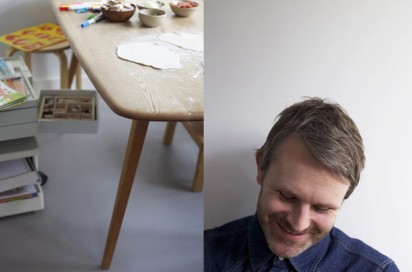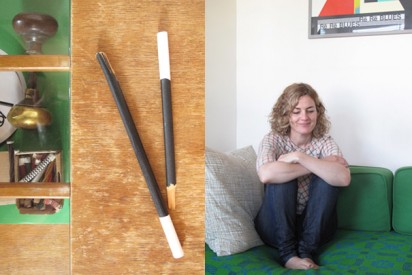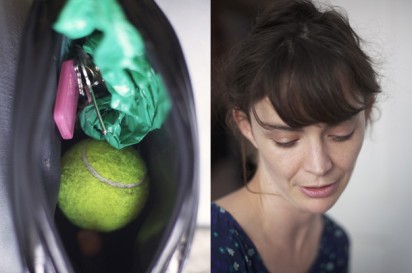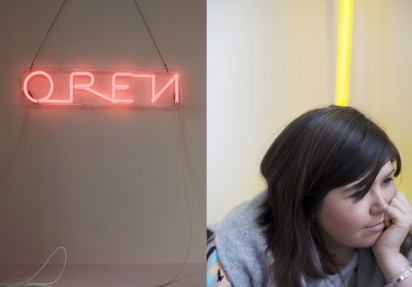
London-based photographer Sandy Suffield takes photos of people and the objects they hold dearest. Stuffed animals, smuggled silver, decade-old birthday party decorations: the list goes on. It began as a side project, as most creative outlets often do, and has since grown into a fascinating visual anthology that shares 120 stories of memories, culture and the universal quest for a meaningful life.
“Everyone has an object with a story. It’s not about its aesthetic or monetary value; it’s chiefly about the narrative wrapped up in the object,” writes Suffield about her photographic project, Things & People. Narratives such as a wall-hanging made from shirts of a late mother. Or a handwritten recipe book passed throughout a trio of sisters. Or saved party poppers from a twenty-something birthday celebration. They’re funny and coincidental and alive. But they’re ours, a collective society of material perspective.
It’s an intriguing pursuit – the idea of exploring our dearest objects and the meanings we attach to them so vigorously. What makes a possession prized? How are we placing value on these objects? And what might our surroundings reveal about our personalities?

The concept has been covered in museums, on podcasts, in books and art installations. In Material Memories, authored by Marius Kwint, Christopher Breward, Jeremy Aynsley, each writer explores the way objects speak to us through the memories that we associate with them. In essence, objects are not “blank carriers onto which humans project prior psychic dramas, but rather, place crucial importance on the precise materials from which they are made, their social, economic and historic reasons for being, and the way that we interact with them through our senses.” It’s with this interaction that we can smell memories, essentially creating our own portal to the past.
And the past, particularly our individual reactions to historical events, is a recurring theme in Suffield’s work. “One fascinating thing to me is to see global historical events crystallized in personal histories,” she writes. Like a Jewish grandmother escaping Germany, smuggling her family’s silver in a false cavity created in a day bed. Or a spoon symbolizing the exodus of Asians ordered by Idi Amin in 1970 Uganda. Or, in a more modern setting, various objects found at Ground Zero and returned to victims’ relatives.

It’s a pattern shared in a beautiful PBS documentary entitled Objects and Memory: “Without the objects, the stories would lack vibrancy; without the stories, the objects would lack significance. Taken together, the images of the objects, the memories they evoke and the stories of their collection take the viewer on a journey where the commonplace is transformed into the remarkable and where the stuff of history is highly personalized.”
It’s for this reason, among others, that antiques and collectibles hold a special place in the heart of many. As I look around my office, I spot a silk scarf from my grandmother, a Danish shoe horn from the flea market – even a vintage lucite paperweight gifted from a fellow office-supply-obsessed reader. Of course, these objects don’t hold meaning simply because they’re worn-in and well-loved; they hold meaning because they’re personal – attached to an experience, an event, a declaration.

“Many people … have the money to buy beautiful environments, but they don’t have the personal history,” says pilot Madine Pulaski in an L.A. Times article about the collecting and displaying of memories. “Without that, the beautiful environments lack feeling, warmth and character, because the owners haven’t lived it. If you surround yourself with your past as well as your present, it’s much more meaningful.”
And perhaps Pulaski was referencing a deeper idea than visual displays and collected memories. Perhaps we’re not surrounding ourselves with meaningful objects as much as we’re attempting to surround ourselves with meaning. With purpose. With essence. And as American mythologist Joseph Campbell once wrote, “Life is without meaning. You bring the meaning to it. The meaning of life is whatever you ascribe it to be. Being alive is the meaning.”
Image Credits: Sandy Suffield
p.s. Just for fun: A photographic series of childhood memories and a favorite object alphabet.


I love this line of thought and storytelling. Memories and stories sparked from objects played a large role in my PhD research with an American circus. I witnessed a lot of ‘forgotten’ memories being re-discovered at the touch or smell of a tin of clown make-up or a moth-eaten violently coloured silk vest.
Discovering the life behind a pair of tatty fishnet tights, revealed through a lesson in how to repair them on the spur of the moment, was such a privilege.
@Ariel: What a BRILLIANT idea for research! I’d love to see the results!
I have two mantels in my apartment: one in the living room and one in the bedroom. Periodically I clear them off, dust, and resolve to keep them empty and minimal. But slowly, my most loved miniatures, candle sticks, framed photos, vases, etc., sneak their way back on there. But I love it so much. Every time I see those objects I see a story about a person I love.
@Koseli – I can SO relate to this. I often try so very hard to be a minimalist, but I think I just love my meaningful objects too much. :)
Thanks for sharing another well-versed post. The concept that we’re tying to “surround ourselves with meaning” and the material plays a huge role in that – I think – is a profound one, especially for those of us who are makers of objects.
Thank you so much, Do-Hee!
Love this line… “Many people … have the money to buy beautiful environments, but they don’t have the personal history.” It really makes me stop and think about what makes a space special—all the sweet artwork by my kids, the cross-stitch art by my mom, the tiny touristy statues we collect on trips… All priceless because they come with memories. Thanks for sharing the post. xo